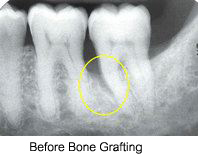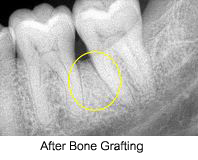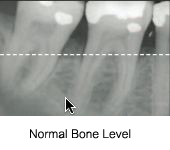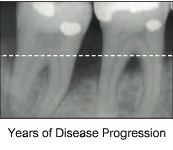- general information
- patient information
- Periodontal Overview
- ––––––––––––––––––––––––––––––––––
- Periodontal Disease and Heart Disease
- Diabetes and Periodontal Diseases
- Periodontal Disease Risk Factors
- Periodontal Complications
- Oral Cancer
- • Biopsy
- Maintaining Periodontal Health throughout a Woman's Lifetime
- Other Diseases and Their Relationship to Periodontal Disease
- Heart Disease: Precautions to be Taken Before Dental Treatment
- Poor Nutrition and Periodontal Disease
- ––––––––––––––––––––––––––––––––––
- What is "Good Oral Hygiene"?
- How to Brush
- How to Floss
- How to Care for Sensitive Teeth
- Hygiene Products
- • Toothbrush Care
- ––––––––––––––––––––––––––––––––––
- New Patient FAQs
- First Visits FAQs
- non-surgical periodontal care
- periodontal therapies
- Traditional Pocket Reduction Therapy
- • Bone Grafting
- ––––––––––––––––––––––––––––––––––
- PerioLase™ LANAP Therapy
- ––––––––––––––––––––––––––––––––––
- Cosmetic Surgery to Improve the Appearance of Your Smile
- • Crown Lengthening to Improve the Esthetics of Your Smile
- • Soft Tissue Grafting to Address Gingival Recession (Root Coverage Grafting)
- Platelet Rich Plasma (PRP)
- Crown Lengthening to Repair a Damaged Tooth
- Exposure / Bracketing of Impacted Tooth
- • Procedure Description for Exposure/Bracketing of Impacted Tooth
- ––––––––––––––––––––––––––––––––––
- Pocket Reduction Surgery FAQs
- Other Therapies FAQs
- dental implants
- Introduction to Dental Implants
- • Single Missing Tooth
- • Two or More Missing Teeth
- • Current Denture User
- • Benefits of Dental Implants
- ––––––––––––––––––––––––––––––––––
- CT Scanner & Comprehensive Implant Planning
- Conscious I.V. Sedation: Is It Right for You?
- ––––––––––––––––––––––––––––––––––
- Socket Preservation Techniques
- Ridge Augmentation and Bone Grafting
- Sinus Graft
- Platelet Rich Plasma
- Routine Implant Maintenance
- our doctors & staff
- office information






Home
Periodontal Therapies
- Traditional Pocket Reduction Therapy
- • Bone Grafting
- PerioLase™ LANAP Therapy
- Cosmetic Surgery to Improve the Appearance of Your Smile
- • Crown Lengthening to Improve the Esthetics of Your Smile
- • Soft Tissue Grafting to Address Gingival Recession (Root Coverage Grafting)
- Platelet Rich Plasma (PRP)
- Crown Lengthening to Repair a Damaged Tooth
- Exposure / Bracketing of Impacted Tooth
- • Procedure Description for Exposure/Bracketing of Impacted Tooth
- Pocket Reduction Surgery FAQs
- Other Therapies FAQs
Bone Grafting
Periodontal disease is known for destruction of the supporting bone that is ultimately responsible for supporting your teeth and providing the support for your face and surrounding tissues. The aggressive bone loss involved in many types of periodontal disease can leave large areas of the tooth root without bony coverage and support. This can be compared to a block of swiss cheese where entire regions of a solid cheese block are missing. As these regions of bone “melt away” during the disease process, like a piece of ice melting, they reduce the bony support for the tooth itself. This degradation process decreases the foundational support required to carry the heavy stresses that are exerted on the teeth during daily chewing, swallowing, and other daily functions.


Bone grafting during conventional periodontal flap surgery provides the opportunity for the surgeon to stimulate new bone development in some of these regions if measures are undertaken before the disease progresses too far and before too much foundational structure is destroyed. Bone grafting techniques utilize various types of grafting materials to used to “stimulate” new bone development between existing bone and the adjacent tooth surface. The graft particles act as a scaffolding for new bone growth, actually allowing the body to eventually replace the graft material with natural bone produced by the patinet’s own development system. Sources of bone graft materials include bovine, porcine, human, and some synthetic materials. Each clinical situation calls for specific types of grafting and it is the decision of the surgeon what type of material will be used in a particular situation.


The bone grafting process takes time to be successfully completed and surgeons are often challenged with the ingrowth of soft tissue into the slowly developing graft site. The use of “biocompatible membranes” has been used very effectively in bone grafting techniques, providing the stability of the graft site needed for the successful replacement of missing bone. The role of the “membrane” is to create a “wall around the graft” that prevents in-growth of aggressive soft tissue that can disrupt the development of a solid and predictable graft site. Most of these materials today dissolve over specific periods of time, allowing the surgeon to regulate the overall replacement process. Bone grafting of any kind in the oral cavity is a difficult process because the mouth is full of bacteria that “live” in the oral environment. The body’s tremendous immune system is constantly controlling the bad types of bacteria and promoting the healthy growth of many of the good forms of bacteria that are required for normal activity in the oral cavity. The good news is that we can repair critical sites of destruction that ultimately will allow many patients the opportunity for a second chance to save their teeth and their smile.
9398 Viscount Blvd, Suite 1-A | El Paso, TX 79925 | Tel 915-598-6702 | Fax 915-593-7478
Home | General Information | Patient Information | Non-Surgical Periodontal Care | Periodontal Therapies | Dental Implants | Our Doctors & Staff
Contact Us | Referring Doctors | Disclaimer | Sitemap | Periodontic Website Designby PBHS 2012©